Several countries around the world are home to islands that are occupied by animals, some cute and furry, some peculiar and unique. What’s more, these animals somehow ‘own’ those islands just by their presence in abundance! Let’s check out 10 of such places around the world where animals outnumber humans.
1. Rottnest Island, Australia: Quokkas
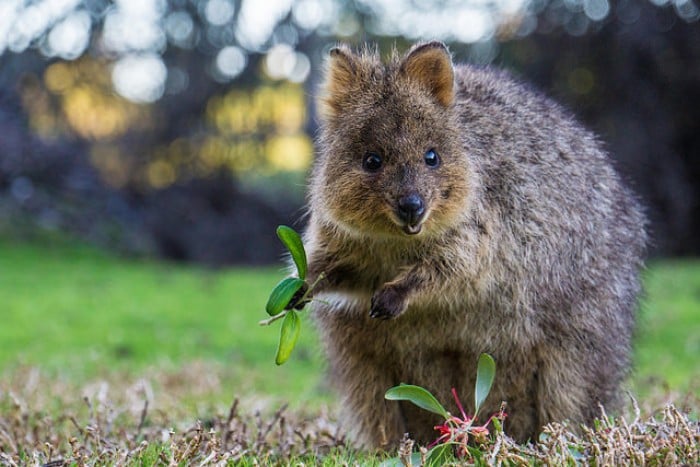 Image credit: Sam West
Image credit: Sam West
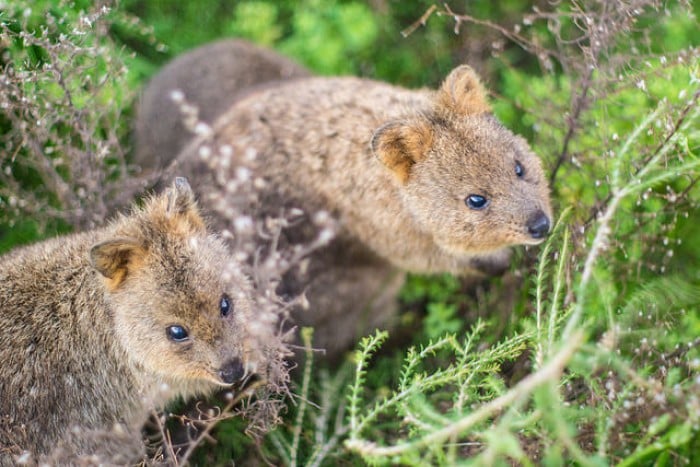 Image credit: Sam West
Image credit: Sam West
The Rottnest Island is the only place where quokkas gather in large numbers. These nocturnal creatures are often found sleeping or resting under shady bushes and dense vegetation, and are just like other marsupials like the kangaroo and wallaby where females suckle their young in a pouch.
The most fascinating thing about these inhabitants is that they don’t seem to mind posing for a picture with you! They have well adapted to the human presence, and are bold enough to roam the streets, and empty the trash can for food. Unfortunately, it is illegal to hug these creatures, and you can’t feed them because human food like chips or bread can cause detrimental effects to their health.
Also read: Everything You Should Know About the Most Dangerous Animals in Australia
Nevermind though, ain’t a cute selfie already a pleasure?
2. Miyajima Island, Japan: Deer
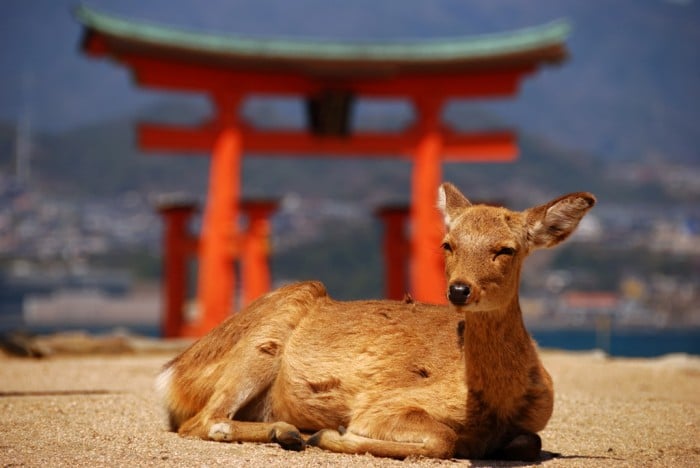 Image credit: Yevgen Pogoryelov
Image credit: Yevgen Pogoryelov
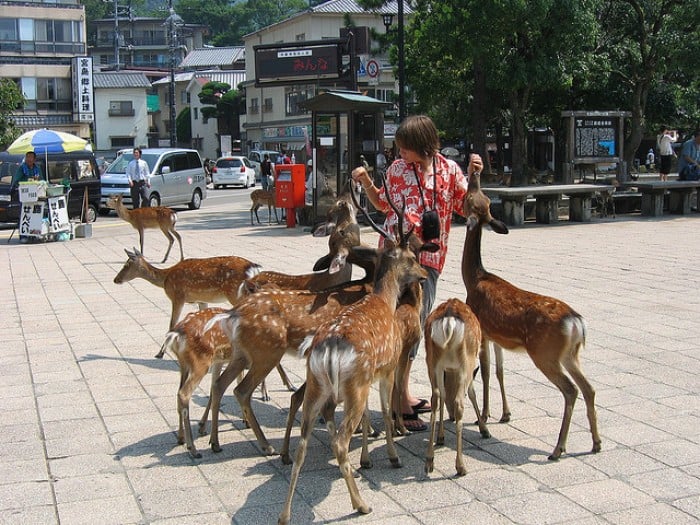 Image credit: Sjors Provoost
Image credit: Sjors Provoost
Itsukushima, popularly known as Miyajima, translates to Shrine Island in Japanese. Apart from the Itsukushima Shrine (belonging to the Shinto religion), which is also a UNESCO World Heritage Site, the island houses many other temples, such as the Toyokuni Shrine and the Daiganji Temple. Upholding its sacredness, much of the island’s nature is kept intact. For instance, its maple trees are not cut for lumber.
What we want to point your attention to, however, are the darling deer!
The deer are considered sacred in the Shinto religion as they have been regarded as messengers of the Gods, and therefore are left to walk around freely. It is no wonder that tourists’ first experience being on the island is their encounter with the deer. It is believed that the deer have lived on the island for a good 6,000 years!
The deer are also pretty tamed! Look at this Nara deer, obediently practising the courteous cultural Japanese bow!
3. Macquarie Island, Australia: Penguins
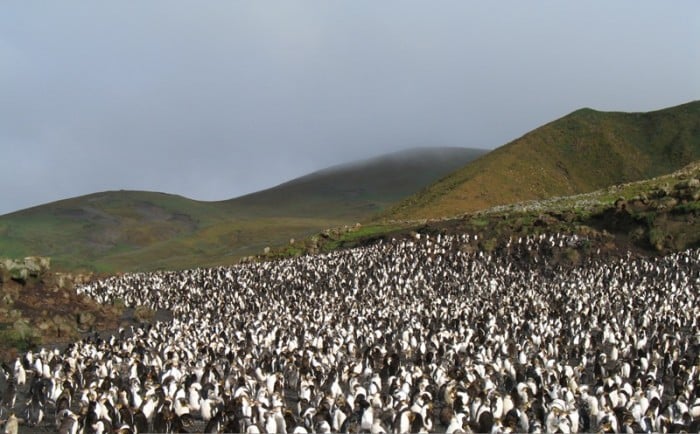 Image credit: Wikipedia
Image credit: Wikipedia
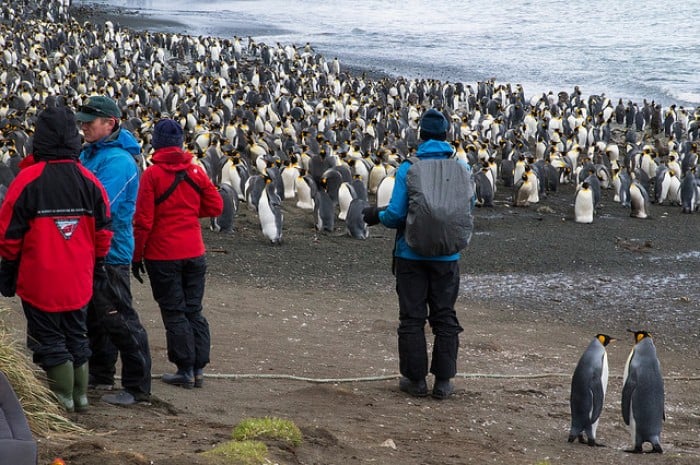 Image credit: David Trowbridge
Image credit: David Trowbridge
A paradise of lush green and crystal clear waters, Macquarie Island is home to an army of over four million penguins that come in four breeds – Royal, King, Gentoo and Rockhopper penguins. An aerial view of the wildlife sanctuary gives a spectacular display of the swarm of penguins at the water edge, and a near inspection unveils groups of them swimming in the water. These penguins share their marvellous haven with other animals such as petrels and albatrosses, and are often visited by excited tourists who ride on boats to observe these animals in their natural habitat.
In fact, the population of penguins on the island was once on the edge of extinction due to extensive hunting for its fur and blubber. However, effective conservation measures put in place in the 1960s have allowed the throngs of penguins and their fellow fauna friends to thrive and make the place their home. The island also became a UNESCO World Heritage site in 1997.
4. Assateague Island, USA: Ponies
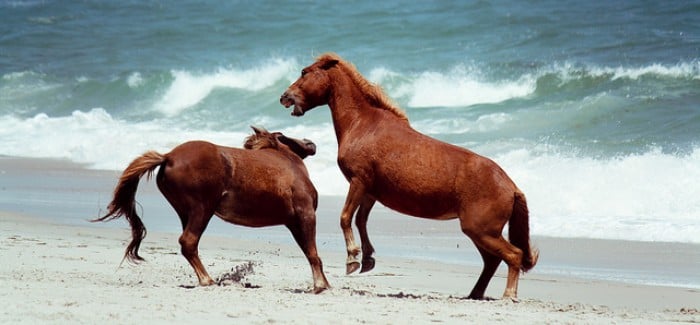 Image credit: Travis Modisette
Image credit: Travis Modisette
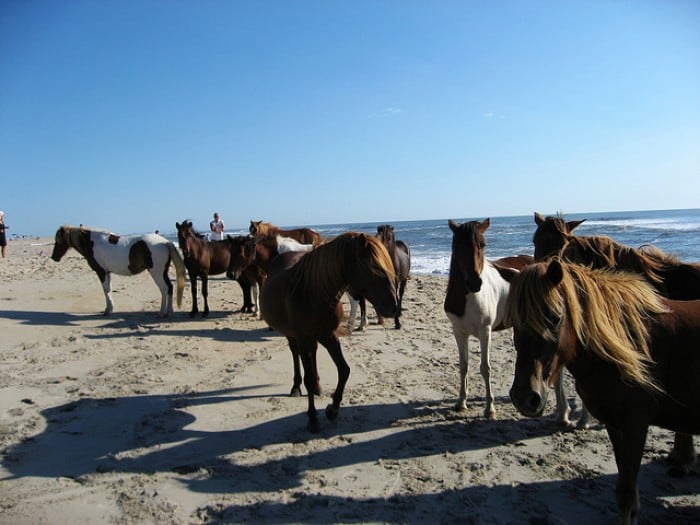 Image credit: Mrs. Gemstone
Image credit: Mrs. Gemstone
Situated in both Virginia and Maryland, the Assateague Island is home to a feral horse population, which are descendants of domestic horses that do not grow beyond a specific size. Despite having the phenotype of a horse, they are commonly called ponies considering their small size due to the poor habitual conditions on the island.
While legends suggest that the horses are survivors of a shipwreck that occurred off the Virginia coast, there is no solid evidence to confirm it. It is more likely, however, that these horses were brought to the island in the late 17th century by colonists or mainland owners to escape fencing laws and taxation of livestock.
In order to maintain a healthy population of wild ponies, the two states adopt different resource management techniques. In Maryland, the female horses undergo contraceptive vaccine annually through a dart gun to reduce high pregnancy rates with no harmful side effects. In Virginia, the Annual Pony Swim, a practice of pony penning, involves horses swimming across the Assateague Channel to Chincoteague Island, where an auction takes place to reduce their count on Assateague. The remaining unsold horses swim back to Assateague a couple of days later.
Check it out here!
5. Okunoshima Island, Japan: Rabbits
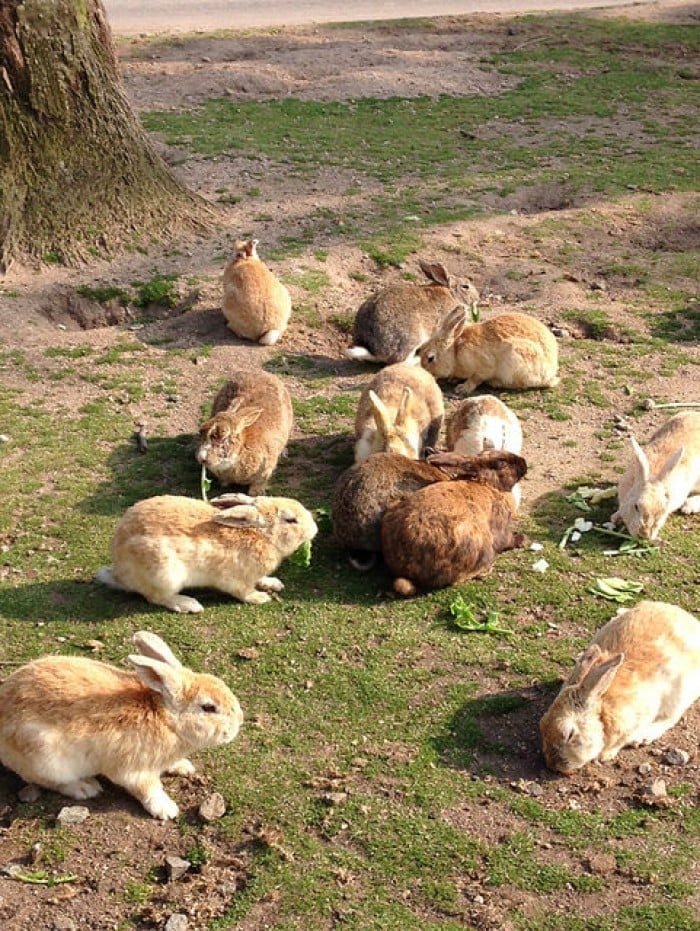 Image credit: dramaqueenz
Image credit: dramaqueenz
Once a production site for chemical weapons during World War II, this 700,000-square-metre Japanese island is home to a historical attraction – the Poison Gas Museum – but it is rather better known for its adorably fluffy residents that roam the pathways and forested areas. Alternatively called Usagi Shima or Rabbit Island, this bunnyful place is pretty much authentic to the name itself!
Some historical accounts claim that these rabbits are the predecessors of some freed bunnies from an unfortunate herd of rabbits. The rabbits were brought over to the island between 1929 and 1945 to test the effects of the 6,000 tons of poison gas secretly produced by the Japanese army. However, others have claimed that the entire herd had been killed when the factory shut down, and instead, eight rabbits had been brought to the island by schoolchildren in 1971. The bunnies have been breeding ever since. It’s unlikely an exact origin of these cute animals can ever be discovered, but that holds less attention than being in the company of these furry friends, who are remarkably tame!
Go feed the rabbits and get chased by a herd, like this girl!
6. Madagascar: Lemurs
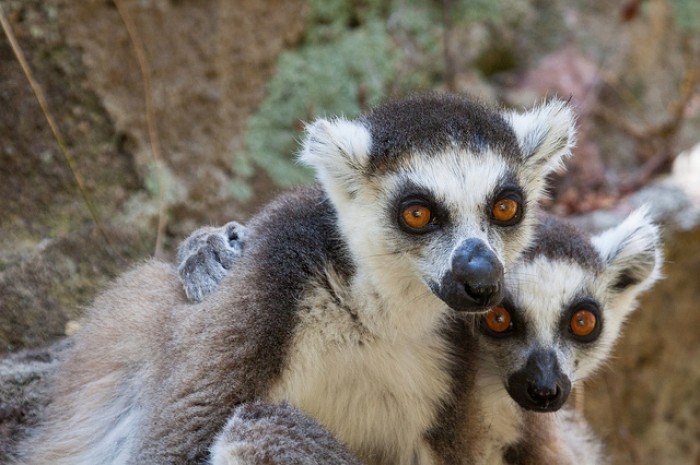 Image credit: Michael Sale
Image credit: Michael Sale
The lemurs of Madagascar exist today only because of the island’s isolation. Where once it was part of Africa, its separation and continuous drift eastward allowed for the lineage of lemur to exist, while the emergence of monkeys wiped out the existence of lemurs elsewhere in the world.
Carrying a phenotypical mixture of a cat, squirrel and a dog, these lemurs display a range of interesting behaviours, especially when it came to making sounds. While the brown lemurs and sifakas grunt, the mouse lemurs chirp and their indri counterparts let out a wailing call, akin to that of a police siren or the song of the humpback whale.
7. Big Major Cay, Bahamas: Pigs
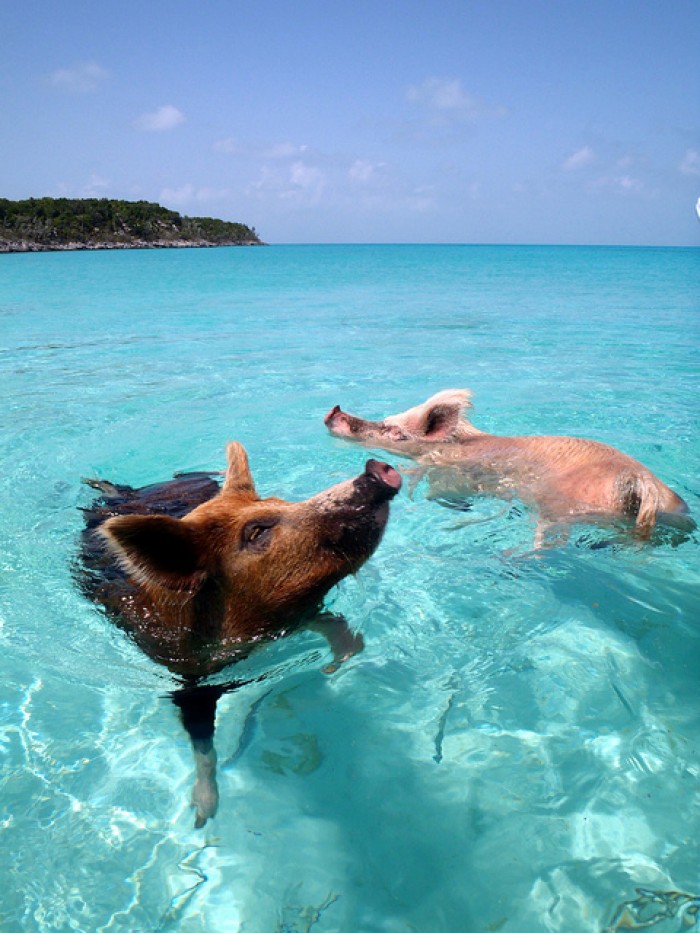 Image credit: cdorobek
Image credit: cdorobek
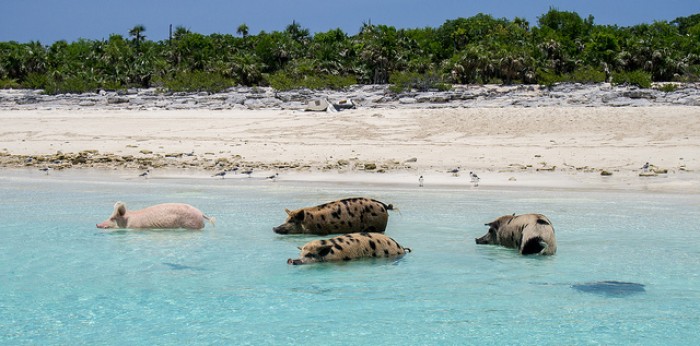 Image credit: Norm Lanier
Image credit: Norm Lanier
The Bahamas has been named as the “Official Home of the Swimming Pigs”; these feral pigs can be found kicking in the waters of Exuma’s Big Major Cay, also known as the Pig Beach. These pigs partake in various aquatic activities that are popular with the tourists, such as snorkelling with the tropical fish and sea turtles as well as scuba diving!
You will also witness the pigs basking under the sun on the sandy beach for hours, perhaps with other tourists as well. If you have a treat, these animals will be your best friends! In fact, the swimming pigs are so marvellous just by its sight that they have inspired a children’s book, “The Secret of Pig’s Island” by Jennifer R. Nolan, while Sandra Boynton wrote a song in her own children’s book that is entitled “The Dancing Philadelphia Chickens”.
8. Lambay Island, Ireland: Wallabies
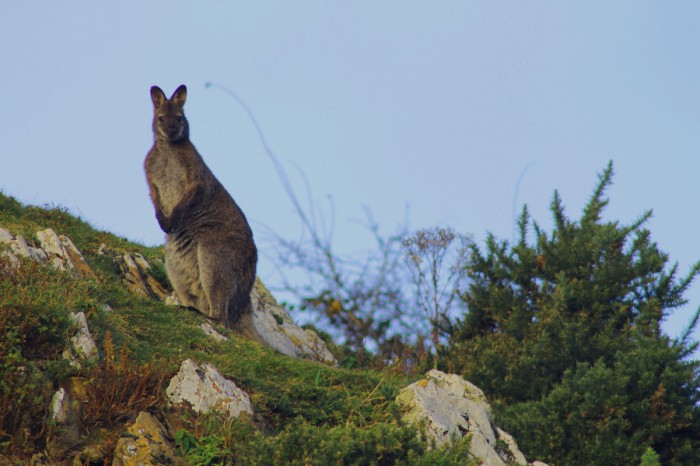 Image credit: The Sliced Pan
Image credit: The Sliced Pan
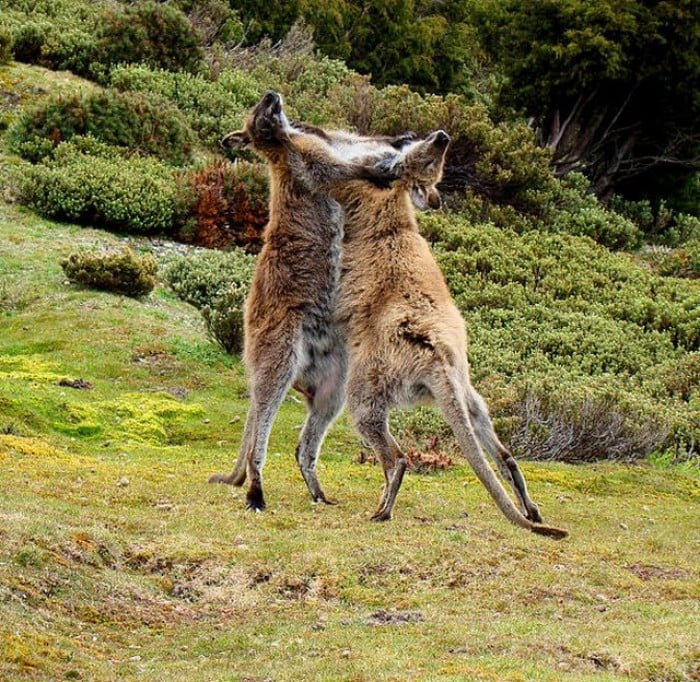 Image credit: Urban Ghosts Media
Image credit: Urban Ghosts Media
If you want to find some red-necked wallabies in Ireland, head to Lambay island, where you’ll find a wild mob of them, not found anywhere else in the country. These furry marsupials are in fact native to Australia but they found their way to Lambay thanks to the famous Barings banking family back in 1904. They had attempted to introduce a good number of exotic species but the wallabies were the only ones who could survive.
Mostly nocturnal, the wallabies rest during the day and search for plants to feed themselves at night. They have also adapted well to the cooler climatic condition of Ireland by growing thicker coats, and while the winter reduces the quantity of fresh plants to feed their hunger, they join the herd of cows on the island and feast on hay!
9. Monkey Island, Liberia: Apes
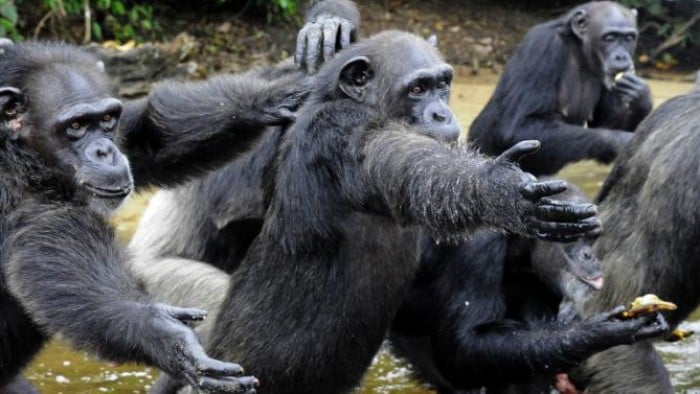 Image credit: Yahoo
Image credit: Yahoo
Monkey Island in Liberia may not be your ideal destination to enjoy the company of chimpanzees but those with an adventure seeking spirit might find this especially fascinating, beneath a story rigged with sadness. In the 1970s, The Liberian Institute of Biomedical Research (Vilab II) was set up to develop treatments against ailments such as Hepatitis. They made use of the abundance of chimpanzees in Liberia for their experiments. However, due to the increasing pressure from animal rights activists who were against animal testing, the lab was forced to cease its operations in 2005. The chimps were then transferred to a remote Liberian island across six islets in the middle of the Farmington River to live a life of retirement. This was originally planned by the biologists to protect these animals.
These apes have in fact survived diseases, two civil wars and numerous medical tests and experiments! In the documentary “The Island of the Apes”, it is evident that the chimpanzees are being cared for by trained locals who feed these apes regularly, and the apes are usually comfortable with those they are familiar with. However, animal rights activists are still appealing to save the 66 chimpanzees, claiming that they are facing starvation, and there are insufficient donations to care for them.
Also read: Galapagos Islands – A Land of Exotic and Brave Animals
10. Kauai, Hawaiian Islands: Chickens
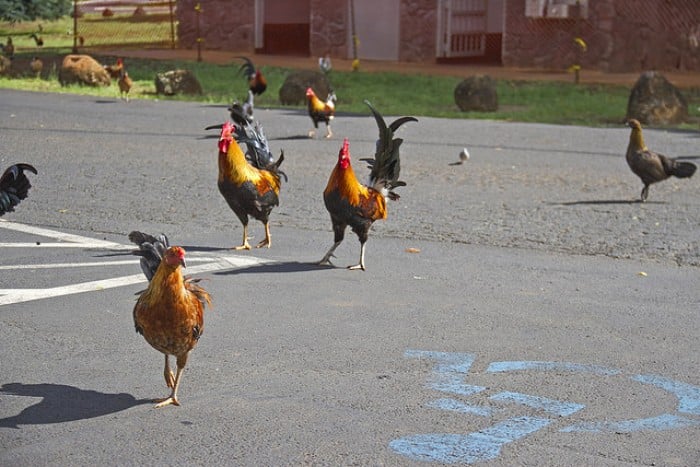 Image credit: CucombreLibre
Image credit: CucombreLibre
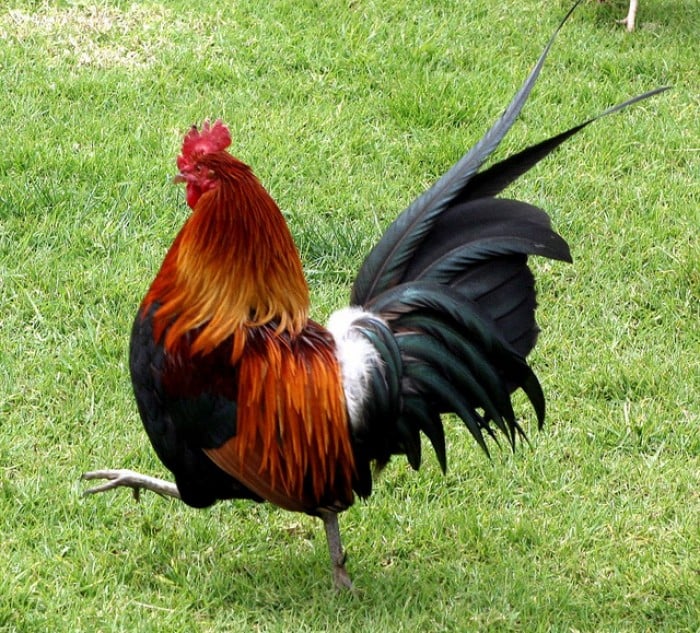 Image credit: InAweofGod’sCreation
Image credit: InAweofGod’sCreation
On the island of Kauai, the oldest Hawaiian island, thousands of roosters, hens and little chicks own the streets and parking lots, and plop themselves on benches and flock in the forests! With no natural predators threatening their existence, these feral birds easily adapt to their surroundings, feeding on cat food, garbage, native bugs and scraps from tourists.
Biologists have in fact studied these Hawaiian occupants and revealed that they may be cross-bred species of the red jungle fowl (brought by the Polynesians when they settled in Hawaii several years ago) and the domestic chickens who escaped from their captive state during Hurricane Iniki in 1992. These chickens are therefore only recently developed from their wild counterparts!
Has any of the above islands made it to your travel list yet? Let us know what other animal-populated destinations deserve a mention!






